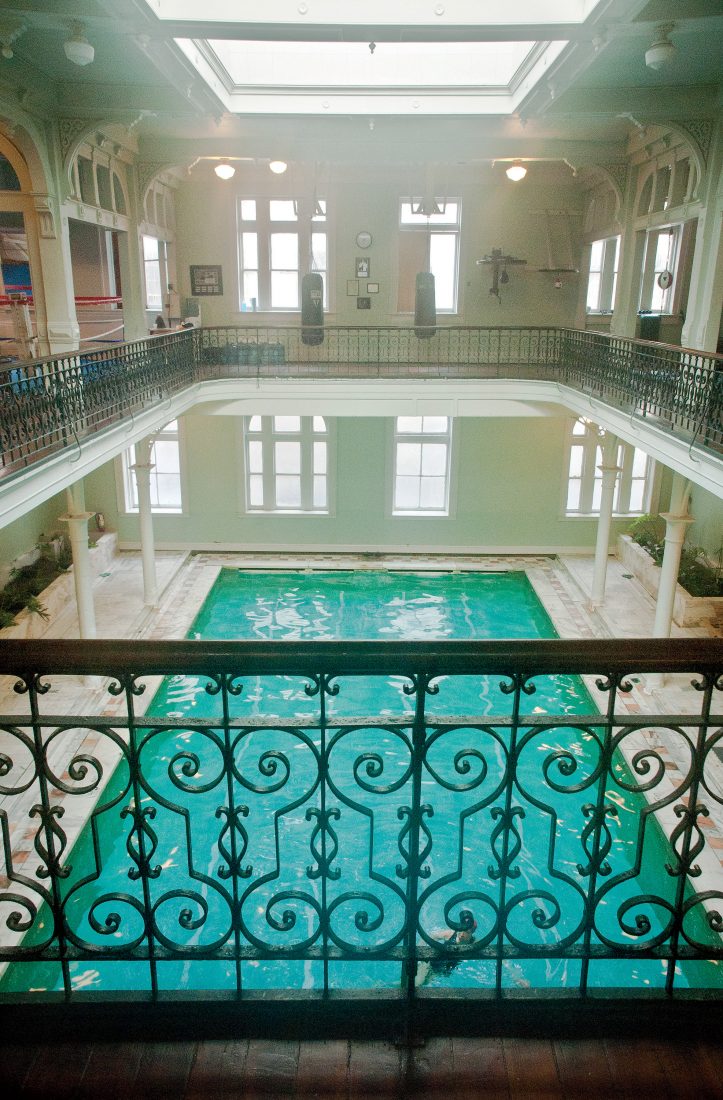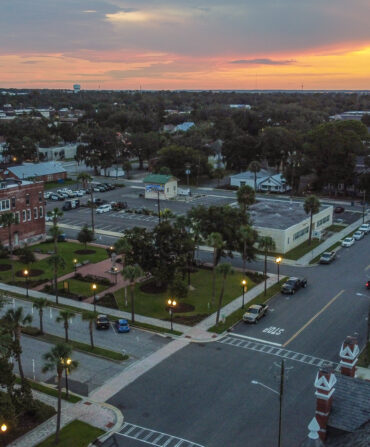About two hours into my first visit to the New Orleans Athletic Club, I had only dim memories of the notion that I was meant to exercise here. One of my friends was wearing mesh shorts—there must have been a reason for that. But I had spent the last hour or two in Vaughan’s Pub, the club’s luxurious, dimly lit bar, with red walls punctuated by Corinthian columns and old black-and-white photographs. I asked for a martini, and the bartender mixed one perfectly and then came back to make sure she had done so. Looking back, it was probably the best measure of a gym I could hope for.

Photo: Elena Ricci
To Your Health
Inside Vaughan’s Pub, where bartenders serve everything from protein shakes to screwdrivers.
I had only recently moved to New Orleans and remained in awe of the buildings, food, and music that appear like mirages sprung up from the past. The Athletic Club played the greatest trick on my overwhelmed senses yet, with its grand workout rooms halfway sheathed in marble and the rest done up in dark hardwood and tile. It felt like old-world New Orleans opulence, because it was. The club was founded in 1872 before moving into its current palatial space in the French Quarter in 1929, making it the second-oldest such institution in the country.
The lore goes deep. Huey Long boxed here. Alec Baldwin did the same. The Saints trained here when they first started, in the sixties, and purportedly borrowed their dapper black and gold from the club’s official colors. For a long time, rules forbade members from wearing swimsuits in the pool. Masseurs once lined the marble floor underneath the colonnade, and Tennessee Williams was a regular on the tables.
The “club” part is at least as important as the “athletic” part. The founders designed the entire business to effectively shield members from the outside world. Receptionists were instructed to never, under any circumstances, allow wives to page their husbands. Considering that the original building sat across the street from what became known as the red-light district of Storyville, this hardly seems like a coincidence.

Photo: Elena Ricci
A street view of the 1920s-era facade.
By 1991, the club’s high walls had finally started to crack under the crush of three decades of social change—membership had declined, equipment languished in bad condition, and the business operated at a steep loss. One member, Bill More, volunteered to buy the club but only on the condition that it open the rolls. Older members now see that meeting as the moment that saved the club from extinction, but at the time it divided the community.
On a recent return trip, I thought about the uncommonness of More’s accomplishment. The New Orleans Athletic Club is a real gym, albeit a gym with chandeliers, a bar, a library, and literal tons of marble. There is an indoor track along with racquetball and basketball courts. The grand ballroom is still used for events, but also for yoga. The bar serves wraps and salads in addition to a steady stream of smoothies, but still mixes a mean martini. You are no longer allowed to swim naked—a fact some longtime members still forget.
Today, the club remains popular among people like me—post-Katrina pilgrims deeply in love with all things New Orleans. And people not like me. Doctors, lawyers, and businesspeople mix with writers, artists, students, and other creative types. The haze in the pink marble steam room is just thick enough to imagine Huey Long over on the other side.








